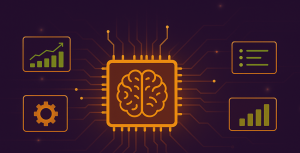If your company is still using an outdated ERP system, it’s time to consider the risks and inefficiencies it brings. Let’s explore why maintaining a legacy ERP can be more costly and problematic than you might think.
1. Outdated Technology Slows You Down
Legacy ERP systems were built for a different era—one where on-premise servers, manual processes, and limited integrations were the norm. While these systems may have served businesses well in the past, they now create significant bottlenecks in modern operations.
- Lack of Cloud Capabilities – Many legacy ERPs require expensive on-premise infrastructure, making remote work and accessibility a challenge.
- Slow Performance – Outdated databases and hardware can cause slow processing speeds, frustrating employees and delaying critical business functions.
- Limited Customization – Unlike modern ERPs, legacy systems often lack flexibility, forcing businesses to adapt their processes to outdated software rather than the other way around.
2. High Maintenance and Support Costs
- Expensive IT Support – Older ERP systems require constant troubleshooting and maintenance, often needing specialized (and costly) IT personnel.
- Vendor Lock-in – Many businesses are stuck paying high fees for outdated support contracts, even when the software no longer meets their needs.
- Hardware Dependency – On-premise ERPs require physical servers, which must be upgraded, secured, and maintained—adding significant overhead costs.
3. Security Risks and Compliance Challenges
- No Regular Security Patches – Many older ERPs no longer receive updates from vendors, leaving them vulnerable to ransomware attacks and data breaches.
- Compliance Risks – Data privacy regulations (such as GDPR or ISO 27001) require businesses to meet strict security standards, which legacy ERPs often fail to support.
- Disaster Recovery Challenges – If a critical failure occurs, restoring data from an old, on-premise system can be complex, costly, and time-consuming.
4. Poor Integration and Lack of Real-Time Insights
Modern businesses rely on seamless data flow between systems—whether it’s accounting, inventory, CRM, or customer service. Legacy ERPs, however, often create data silos, forcing employees to manually enter and transfer data between different platforms.
- No Native Integrations – Older systems struggle to connect with modern business applications, such as Microsoft 365, Power BI, or e-commerce platforms.
- Limited Business Intelligence – Many legacy ERPs lack real-time reporting and analytics, making it difficult for leaders to make data-driven decisions.
- Duplicate Work and Errors – Without automation and AI-driven insights, employees spend valuable time on manual data entry, reconciliations, and error corrections.
The Future is Digital—Is Your ERP Holding You Back?
While legacy ERP systems may have been the backbone of your operations for years, they are now becoming a liability rather than an asset. Modern cloud-based ERP solutions, such as Microsoft Dynamics 365 Business Central, offer better security, automation, and scalability while eliminating costly maintenance and IT headaches.
If your business is still maintaining a legacy ERP, ask yourself: Is it worth the risk? The cost of doing nothing could be far greater than the cost of upgrading to a modern, future-proof solution.





